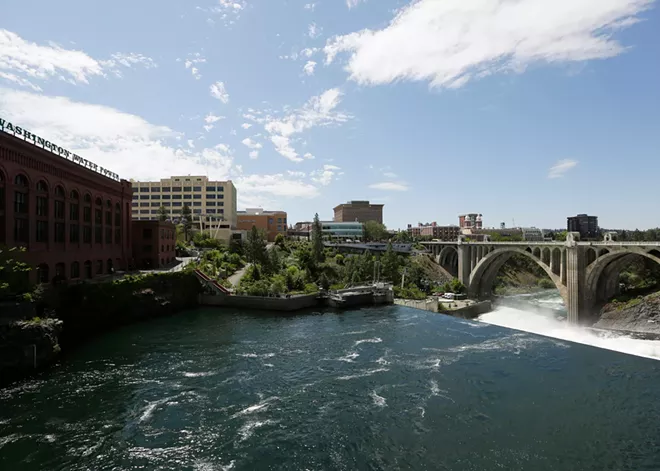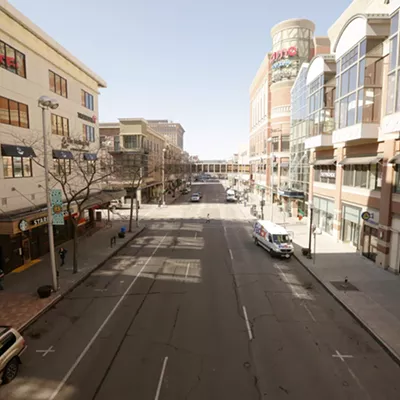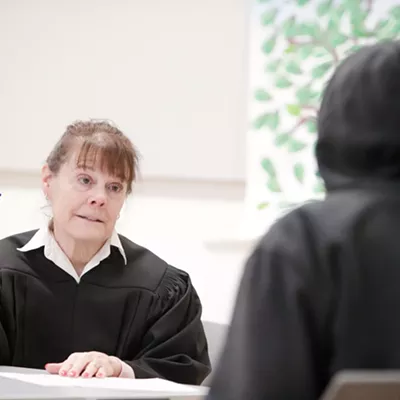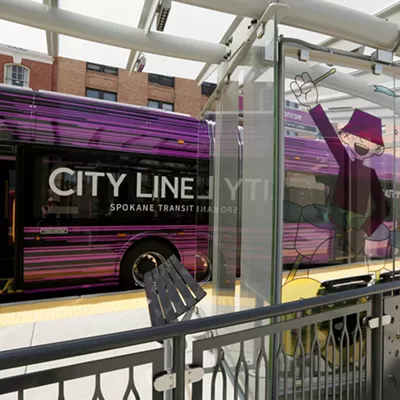
The narrative goes something like this: Downtown Spokane is in decline, is unsafe, is a hotbed of crime and unsavory activity.
Stop me if you've heard this one before.
This story seems to go in waves, and it picks up every couple of years. I vividly remember when similar vague "concerns" were raised in 2014 about the STA Plaza, and even earlier about "street kids" loitering at a very specific corner of Wall Street and Spokane Falls Boulevard.
Over the past few months, it's picked up again, spurred by Chad White closing his ceviche restaurant Zona Blanca, pointing to crime and drug use as the reasons, and Larry Stone's release of a familiar set of priorities for his new business association.
The problem is that the idea that downtown is bereft with petty crime and vagrancy is just not borne out in the data. As of late October and according to Spokane Police Department CompStat reports, year-to-date property crime was actually down more than 7% in the downtown area. For some types of crime, the decline is even more stark. Commercial burglaries are down 24%. Commercial robberies — considered a violent crime — are down 42%. Assaults? Down 10%.
The other almost more important problem is that this narrative is self-reinforcing.
If people only ever hear negative things about downtown from people — sometimes from those who own businesses there, many times from people who rarely visit — then why would anyone ever come? Suddenly the narrative becomes reality, people stop going downtown because people say they feel uncomfortable there, and a spin-off version of the much-hyped "urban doom loop" is born.
Now, none of this is to say that downtown doesn't have some real challenges that go beyond narrative. Too many people experience homelessness in our city, many of our services remain too concentrated in the core, and addiction remains a nationwide public health crisis. My day job is in place management, so I know firsthand how difficult these problems are to solve.
But in most downtowns (and indeed, often in our own!), major stakeholders play a role in solving problems, rather than simply pointing them out and demanding that someone else solve them.
"...in most downtowns... major stakeholders play a role in solving problems..."
In Seattle, caseworkers for people experiencing homelessness are funded in part through business improvement districts and work alongside district ambassadors downtown and in Ballard and the University District. In Walla Walla, the downtown organization's effective pandemic-era street closure has morphed into a year-round, beloved public plaza that has boosted visits (and sales for nearby retailers) far above pre-pandemic levels. The Downtown Bellingham Partnership has played a major role in encouraging more people to live in that city's core, even boosting public outreach for specific housing development projects there. And downtown organizations across the country have created small business incubators and creative enterprise programs to fill vacant retail spaces, support entrepreneurs and boost foot traffic.
Spokane's downtown business and institutional leaders should be thinking along similar lines.
Could organizations like the Downtown Spokane Partnership work with the city to provide additional outreach and caseworkers? The business improvement district already funds a "clean and safe" team; could funding some outreach professionals for homeless services be added to the mix?
Could surface parking lots be quickly repurposed to provide broader economic benefit, perhaps with vendor fairs, markets, entertainment and other programming? Temporary activations like these are proven to bring more people to urban cores, as seen from Detroit to Atlanta to Manhattan, and we've seen our own success with renewed programming in Riverfront Park.
Could marketing of existing programming be better amplified? Right now, in part because of this narrative, too few people are hearing about the fun, exciting, engaging things happening downtown. Are business owners, property owners and organizations on TikTok? Are they working with influencers to share fun events and experiences you can have downtown?
Could we do more to tell people about the benefits of living downtown? Right now, only about 3,000 people live downtown, but if there were 5,000, or 10,000, visitors would be less likely to pay notice to bad actors or inconveniences because there'd be more of everyone around. We don't tell a good enough story about the joys of walking to work, enjoying a concert on a Saturday, grabbing a coffee or a craft beer, or running along the river right outside your front door.
If stakeholders embrace a spirit of optimism and pride first — even in recognition of challenges and setbacks — I truly believe that we can build a stronger, more resilient downtown.
Because joy, like doom, is self-reinforcing. When we build a more compelling message and back it up with real experience, and when stakeholders work together to create and then sell a vision, minds can and will change.
So let's get to work and bring this vision to life. ♦
Anthony Gill is an economic development professional and writer of Spokane Rising, an urbanist blog about ways to make Spokane a better place to live.























